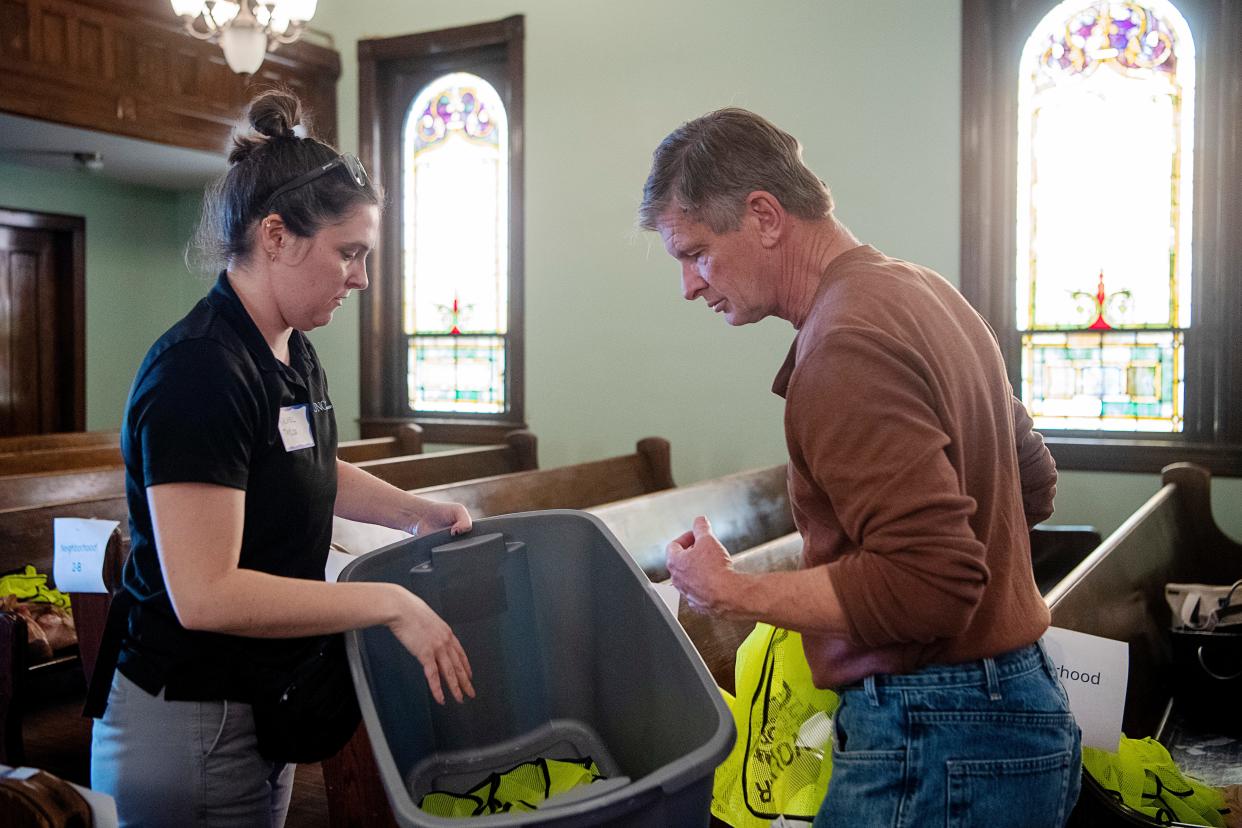Asheville homeless count numbers released. How do they compare to pre-COVID levels?

ASHEVILLE - Homelessness, an issue that has dogged the city for years, is experiencing a positive trend with a decline in the number of unhoused people, according to a recent official count, but a specific group ― those who are not in shelters ― continues to be larger than before the pandemic.
The count numbers were released this week and are set to be discussed at the May 9 City Council meeting. The Citizen Times reached out to city staff prior to the meeting.
Here are some of the details about the count:
What is the point in time count?
U.S. Housing and Urban Development requires all communities getting HUD homelessness aid to do an annual point in time (PIT) count sometime during the last 10 days in January to see how many people are experiencing homelessness on a given night. The local count covers Asheville and the rest of Buncombe County.
Craven Street bridge: Belongings, trash pile at Craven Street bridge: Who is responsible for cleanup? Housing?
Asheville homeless: $4.7 million to address homelessness in Asheville, beyond: Where is the money headed?
Asheville, Buncombe homelessness down?
Compared to last year, homelessness is down. But the four-year trend is more complicated:
2020* Sheltered: 482 Unsheltered: 65 Total: 547 *Pre-pandemic baseline
2021Sheltered: 411 Unsheltered: 116 Total: 527
2022 Sheltered: 405 Unsheltered: 232Total: 637
2023Sheltered: 402Unsheltered: 171Total: 573
Asheville busing myth: Fact checking the Asheville busing myth: Are homeless people being bused into the city?
More: Asheville’s largest landlord stopped accepting rent assistance; How this hurts families
Key points:
Overall homelessness is down 10% from last year and is more in line with historic population size, officials said. Despite the decrease, overall homelessness remains 5% higher than pre-pandemic levels.
The number of people staying in homeless shelters has steadily decreased during the four years, though the drop this year was negligible, at less than half a percent. The trend is due to shelter beds coming back online with recovery from the pandemic, officials said.
The number of people experiencing homelessness outside of shelters dropped 26% from last year. But that number is still 163% higher than before the pandemic.
Polarization, politics
Homelessness has always been a charged issue. But an uptick in unsheltered people since the pandemic has heightened that, with the city facing pushback over efforts to build an emergency shelter in East Asheville and merchants and many businesses that rely on the tourism industry saying downtown was in crisis. Sheriff's deputies have been added to a downtown patrols. Meanwhile, city and state officials are looking into how to clean up a huge pile of trash and other items under a River Arts District bridge that includes belongings of unhoused people.
More: Asheville's Ramada Inn breaks ground on 113 units of permanent supportive housing
More: Asheville's Ramada Inn breaks ground on 113 units of permanent supportive housing
Demographics
Here is the makeup of the 573 unhoused people counted Jan. 31:
Male: 66.8%
Female: 32.5%
Transgender: 0.7%
88% single adults
12% families
21% chronically homeless (12 months, plus disability)
34% Veterans
American Indian, Alaska Native, or Indigenous: 2.6%
Asian or Asian American: 0.7%
Black, African American, or African: 19.7%
Native Hawaiian or Pacific Islander: 0.17%
White: 73%
Multiple races: 3.3%
Non-Hispanic/Latinx: 95.3%
Hispanic/Latinx: 4.7%
Busing myth
The numbers also continued to counter long-running rumors that unhoused people are bused to Asheville from other communities. Of the 131 unhoused people answering a poll during the count, nearly 56% said when they were last housed, it was in Asheville. Just over 15% said it was somewhere else in Western North Carolina, with 29% coming from somewhere in the state outside WNC or from another state.
Last year, nearly 58% said they were last housed in Asheville and 24% from somewhere else in WNC.
Moving forward?
Moving ahead, city officials said they would increase use of a Homeless Management Information System that would give "more accurate year-round data." That data would be used to improve prevention and responses to homelessness.
"Staff expect that the two new permanent supportive housing projects coming online this year will impact the 2024 count," City Manager Debra Campbell said in the report set to be given to the council.
New approaches will also be use in providing shelter, doing outreach and responding to encampments, Campbell said.
Joel Burgess has lived in WNC for more than 20 years, covering politics, government and other news. He's written award-winning stories on topics ranging from gerrymandering to police use of force. Got a tip? Contact Burgess at jburgess@citizentimes.com, 828-713-1095 or on Twitter @AVLreporter. Please help support this type of journalism with a subscription to the Citizen Times.
This article originally appeared on Asheville Citizen Times: Asheville homeless numbers released. How many now compared to pre-COVID

